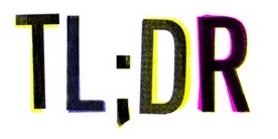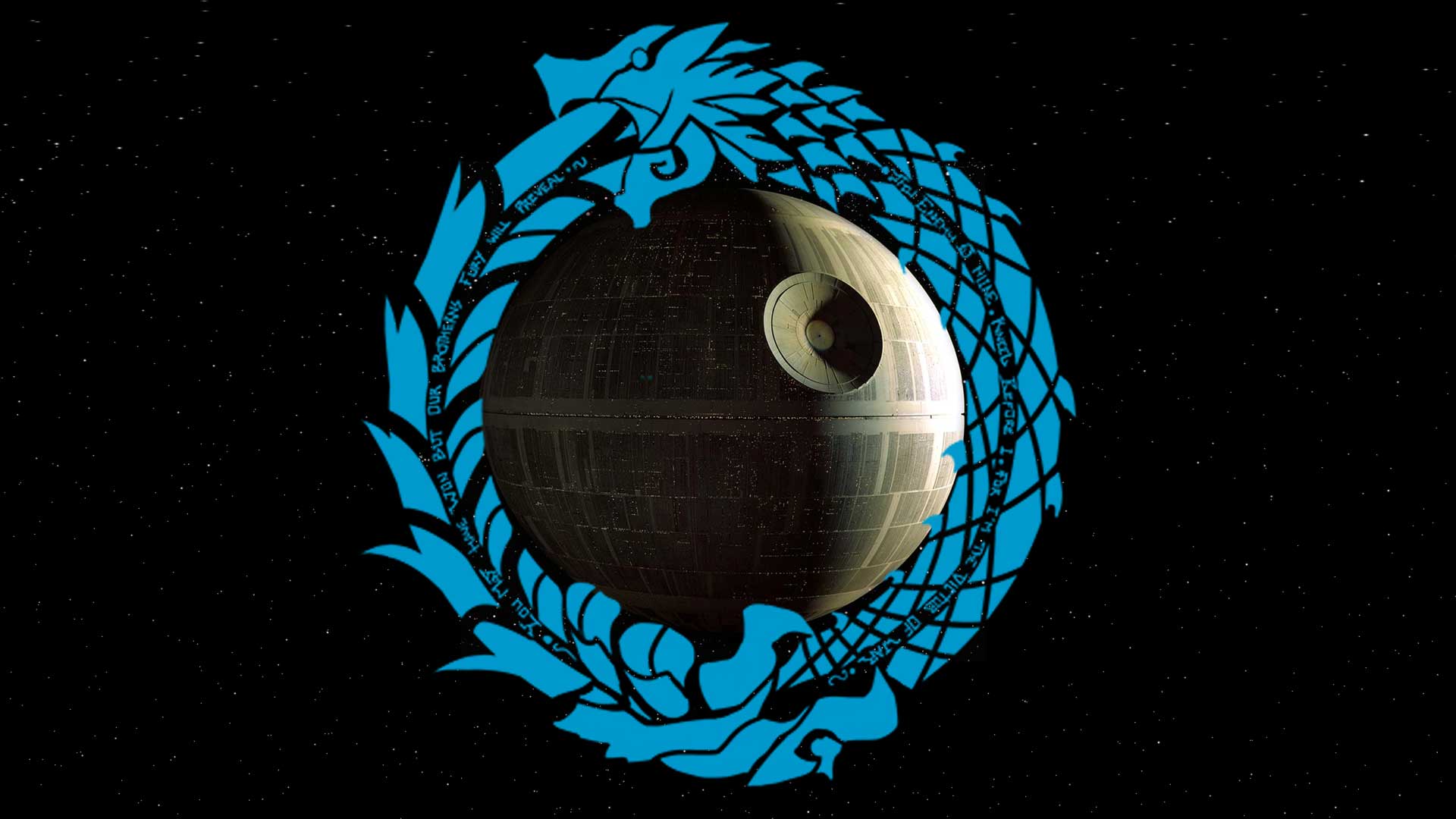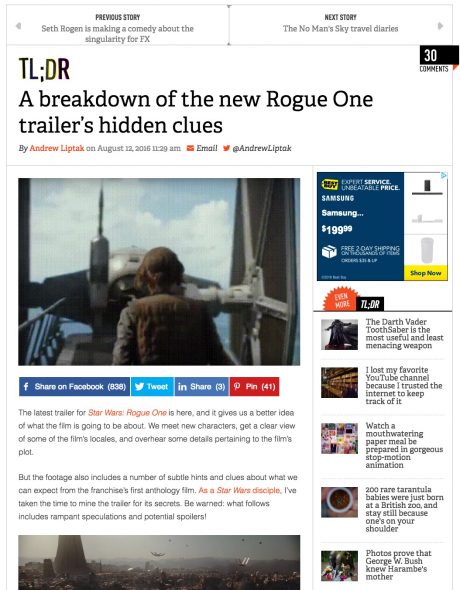In case you’ve been living under a rock recently, a new trailer for Star Wars: Rogue One recently landed. Here it is, for you rock-dwellers and non-rock-dwellers alike:
And within a few days, the Internet reliably provided us with a meticulous breakdown of its content. There are a bunch of examples out there, but this one from The Verge was the first of its type to appear in a Google search for “Rogue One trailer.”
I’m fascinated by these trailer breakdowns; they’re like modern day exercises in reading cracked oracle bones, except the bones are 2 minute YouTube videos, and the Gods are our corporate story overlords at Disney.
So why not subject the breakdown article itself to the breakdown treatment? This is Overthinking It; after all. If not here, then where? If not now, then when?
Let’s have some fun with this. We may learn a thing or two about our modern content ecosystem in the process.
The Display Ad

This is both a highly appropriate and extremely inappropriate place to start. It’s appropriate because it comes first in the top-to-bottom layout of content, and it’s a reminder that advertisements fuel most of the Internet’s content economy (a topic we’ll revisit at the end). It’s inappropriate, though, for many reasons. It has nothing to do with Star Wars. A sizable portion of people viewing this article, especially tech savvy readers of The Verge, may be running an ad blocker and don’t see it at all. And it changes depending on who you are, where you are, and where you previously were on the web. This, of course, is precisely the point of delivering content dynamically over the internet, but it’s precisely the opposite of the topic at hand: a blockbuster movie that will offer the same, undifferentiated experience to hundreds of millions of people.
We’re off to a thrilling start; I know. It only gets crazier from here.
The Verge

The Verge is a technology and culture website owned by Vox Media, which has both bonafide “independent new media” credentials as well as a hefty investment from legacy media player NBCUniversal. Speaking of legacy media players, this breakdown article depends entirely on original content created by another legacy media player, Disney. In other words, we see new and old media in a symbiotic relationship with each other at both the micro and macro scale here.
Trending Now, Previous Story, Next Story
Earlier I described The Verge as a “technology and culture website,” just as if I were describing Overthinking It as “an insanely brilliant pop culture website.” The truth is that The Verge has gone through growing pains as they try to stretch from their roots–in this case,the gadget blog Engadget, which served a non-stop stream of laptop, tablet, and cell phone news and reviews–into new areas in an effort to feed their expanding ambitions, both in terms of what they want to opine on and what they need to do to expand and diversify readership. This tension is plainly on display here: the article is about Star Wars, the “Trending now” article is about a cell phone and its headphone jack, the previous story is about a TV show, and the next story is about a video game.
Does it make sense for all of these topics to exist on the same website? Does it even matter, especially as more content is driven to websites through social shares, rather than visits to a home page that are theoretically driven by a general desire to read about a given set of topics? Only time will tell, but with $200 million in the bank from NBCUniversal, they have some cash to play around with and figure this out.
TL;DR

Even if you already know that TL;DR is internet shorthand for “Too Long; Didn’t Read,” you may not know what this is doing at the top of this page. The Verge created this tag for content that’s a little more lighthearted and less news-y than the usual fare. Recent articles that fall under the TL;DR banner include:
- Meet the man behind Stranger Thing’s terrifying monster
- A petition with 28,000 signatures imagines Harambe as a pokémon
- The botched Jesus fresco gets the opera it deserves
Is there a unifying theme here? Maybe in that all of these articles all skew more towards the culture end of the spectrum rather than hard tech and gadgets.
Also, this is probably just a coincidence, but the TL;DR logo bears a passing resemblance to that of the Suicide Squad movie:

The Headline

This is a good headline; it succinctly explains what this article is about, and it gives the slightest taste of a “curiosity gap.” When done in the extreme, the curiosity gap feels like cloying clickbait (“you’ll never guess what happens next”). When done appropriately, it engages the reader and sets expectations appropriately: you give me your time, I unlock the secrets of this movie trailer, you learn something new.
For the graphic design enthusiasts out there, the font used to render the headline is called “Adelle.” It’s a new font (released in 2009, just two years before the Verge launched in 2011); it’s an award-winner (won Gold for Original Typeface in the 2010 European Design Awards); and at $508.40 for a full bundle single user license, it ain’t cheap. It’s a small detail, but it speaks to the thoughtfulness that went behind the design of The Verge, which is no fly-by-night operation (again, its parent company got a multimillion investment from NBCUniversal to pay for stuff like this).
The Author
Andrew Liptak is the weekend editor of The Verge, and on his website’s bio, he bills himself as a “freelance writer and historian from Vermont.” He earned a bachelor’s degree in 2007, so he’s probably about 30 years old, and yes, can be lumped in with all of those hashtag millenials working in new media. In the article, he cites his experience building stormtrooper armor to establish his Star Wars credentials, and I am sufficiently impressed. I claim to be one of the leading Terminator authorities on the internet, and my one foray at creating a Terminator costume landed me on this list of “15 Terminator Costumes That Absolutely Blow“.
The Feature Image Animated GIF
OK, finally we’re talking about the article itself. Or at least the image that kicks things off:
/cdn0.vox-cdn.com/uploads/chorus_asset/file/6930057/xpAggeu%20-%20Imgur.gif)
In a trailer full of arresting visuals, this is probably the best one to lead the article: it features both the new protagonist mixed with an iconic classic Star Wars image that’s doing something we’re not used to seeing (a TIE fighter rising vertically, like a helicopter in a Rambo movie).
Is ripping a GIF from Disney’s movie trailer legal? Almost certainly yes, given the commonly accepted criteria for “fair use,” which allows copyrighted materials to be reused without infringement:
- The purpose and character of the use, including whether such use is of a commercial nature or is for nonprofit or educational purposes
- The nature of the copyrighted work
- The amount and substantiality of the portion used in relation to the copyrighted work as a whole
- The effect of the use upon the potential market for or value of the copyrighted work.
Perhaps more importantly, a GIF like this is just free advertising for Disney, and they’d be fools to try to wipe it off of the internet.
On a technical note, the GIF itself clocks in at a staggering 10 megabytes. The rest of the articles comes in at 20 megabytes. Someone with a 1 gigabyte per month data plan could burn their entire data allotment just by refreshing this page 50 times. This is of a piece with the trend for web pages to get larger over time, thanks to increasing bandwidth capabilities and demand for more rich content, such as animated GIFs. As this recent article from Wired put it, the average webpage is about the same size as the classic computer game Doom.
The Article Itself
By the numbers, there are over 1,200 words and 31 images dedicated to this 2 minute trailer. That’s 10 words per second of footage, and one image for every 4 seconds of footage.
The analysis is a combination of information revealed by the cast, crew, and studio; backstory from other canon sources (e.g. the Clone Wars TV series), factual descriptions of what’s going on in the footage, and plenty of open speculation. The word “appears” is used 4 times; “maybe” 3 times; “probably” twice, and “assume,” “unlikely,” and “possible” one time each. There are eight question marks in the piece.
It’s a good mix of a straightforward recap, careful close reading of the trailer recontextualized with outside information, and straight up speculation. All of this is exactly what we’ve come to expect given an insatiable Star Wars fan culture. The audience is dying to know more about these new movies, and media outlets are more than happy to create supply to meet that demand.
Conclusion: The Ouroboros
I admit that part of the motivation of this article was an exercise in the absurd: what if we take an everyday piece of web content and subjected it to the same level of scrutiny that is typically applied to a highly anticipated movie trailer? Well, we learn a few things about web publishing and the current pop culture landscape, that’s what happens.
In particular, we see an illustration of the recursive relationship between different media producers and audiences. A major movie studio releases a movie trailer, which is basically an advertisement for people to pay $15-$20 to see a movie. A website with a large following takes this content (which was free to acquire and didn’t require sending a reporter out into the field for weeks to gather information) and makes money from advertisers who pay for the large number of eyeballs attracted to a piece of Star Wars-related content.
Then a niche website with a small following takes the content based on other content and picks it apart to make some money from advertising and paying subscribers.
Everyone involved is feeding the Star Wars fandom machine: content producers and consumers help sustain interest in Star Wars, and we’re all rooting for lots of people to go see this movie, because we all benefit from it. The studio makes money from ticket sales. The big website gets more stuff to write about and more ad impressions. This small website also gets stuff to write about, and more ad impressions and subscribers. Then the studio gets to create the next big movie, and the cycle continues.
It’s an ouroboros: a monster that feeds on its own tail, a feedback loop without end. Which is appropriate, since Disney gives every indication that it wants the Star Wars franchise to continue without end.
This is where you come in! If nothing else, go see Rogue One when it comes out in December. Or, if you want to be a real champ, write up a breakdown of this breakdown of the breakdown.


Maybe I don’t understand the ouroboros, but I thought it implied a never-ending cycle. And if it is never-ending, is it also not never-beginning? In this relationship, between Disney, Star Wars, the Verge, and Overthinking it, there is a very clear beginning and a very clear end. These stories only matter until the movie comes out at which point we no longer care about the trailers.
Help me understand @MarkLee. What am I missing?
Technically, Star Wars itself obviously has a clear beginning (Episode IV, released in 1977), but if we want to make the ouroboros metaphor work as well as possible, we’d extend the beginnings of Star Wars back to all of tis direct influences (Kurosawa, etc.), and their influences, etc., etc., all the way back to cavemen telling the first stories by the fire. Stories lead to enthusiasm for more stories, which leads to more stories, which leads to more enthusiasm for stories, etc. etc.
This has always been the case, but the phenomenon is more noticeable and more intense given the nature of modern electronic media.
And it’s turtles all the way down…..